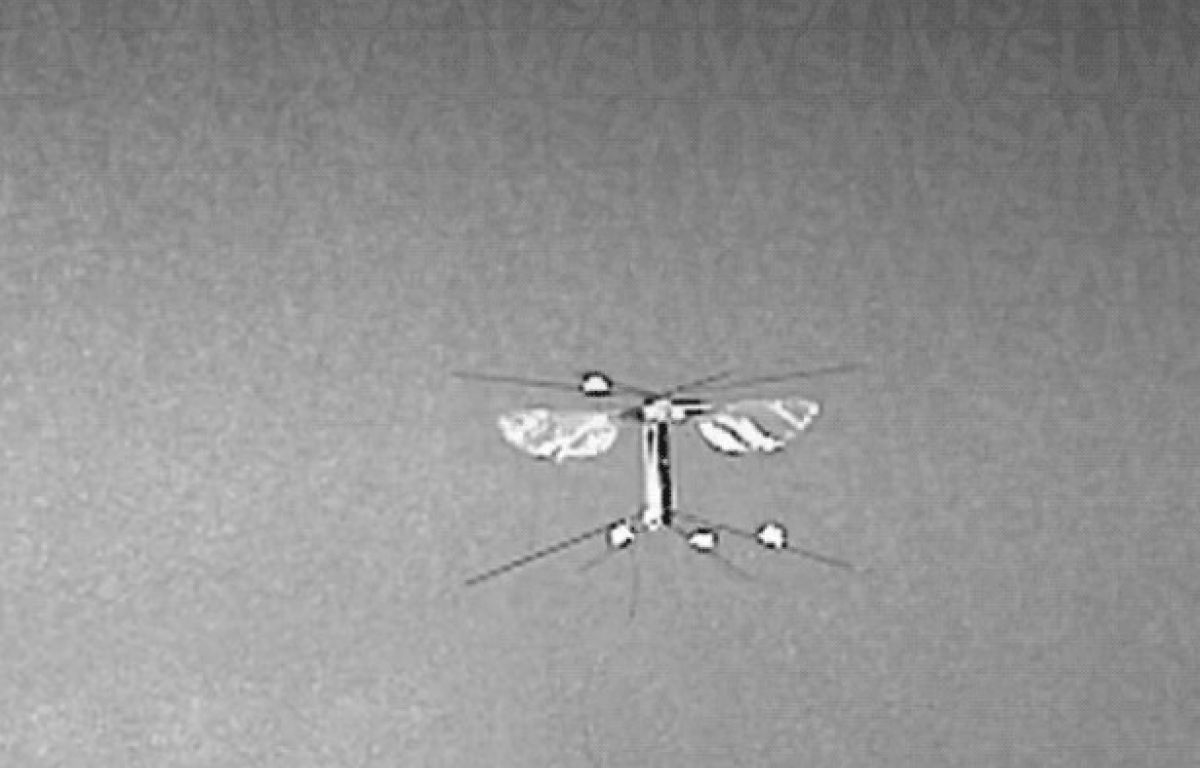Researchers have been trying for more than 30 years to create artificial flying insects. Having access to tiny, insect-like robots could be useful in applications from artificial pollination to rescue efforts. Some would probably like to use them for spying as well, but let’s focus on bening applications.
However, getting the tiny robots to act like a true insect hasn’t been easy. Now, a team at Washington State University has reported a breakthrough. They’ve created a robotic bee that can fly in all directions, just like the real deal.

The Bee++ prototype has four wings made out of carbon fiber and mylar, as well as four lightweight actuators to operate each wing. The robot can complete the six degrees of free movement a typical flying insect does, including the tricky twisting motion known as yaw. It’s described in the journal IEEE Transactions on Robotics.
“It’s a mixture of robotic design and control,” Néstor O. Pérez-Arancibia, study lead and professor in WSU’s School of Mechanical and Materials Engineering, said in a statement. Control is highly mathematical, and you design a sort of artificial brain. Some people call it the hidden technology, but without those simple brains, nothing would work.
An impressive new little robot
Pérez-Arancibia and his team initially developed a two-winged robotic bee but it was limited in its movement. They then built in 2019 a four-winged robot that was light enough to take off. To allow the robot to do two movements known as pitching or rolling, the researchers made the front wings flap in a different way than the back wings.
However, Pérez-Arancibia emphasized the importance of being able to regulate the intricate yaw movement. Failing to do so leads robots into a state of uncontrollable spinning, rendering them unable to concentrate on a specific target, eventually resulting in a crash. “Lack of yaw control severely restricts capabilities,” he said in a statement.
The presence of all degrees of movement is vital when it comes to executing evasive maneuvers or tracking objects effectively, Pérez-Arancibia said. “Controlling yaw has posed a significant hurdle for a long time. Despite theoretical concepts, practical implementation remained unattainable due to limitations in actuation capabilities,” he added.
In order to enable controlled twisting motion in their robot, the researchers drew inspiration from insects and modified the wing movement to incorporate angled flapping. Additionally, they enhanced the robot’s wing flapping frequency from 100 to 160 times per second. This involved changing the physical design of the robot and the controller design.
The Bee++ weighs 95 milligrams and possesses a wingspan of 33 millimeters, making it larger than real bees, which typically weigh around 10 milligrams. Unlike actual insects, the robot’s autonomous flight duration is limited to approximately five minutes at a time. The researchers are now working on creating other types of insect-inspired robots, such as water striders.
The study can be accessed here.









